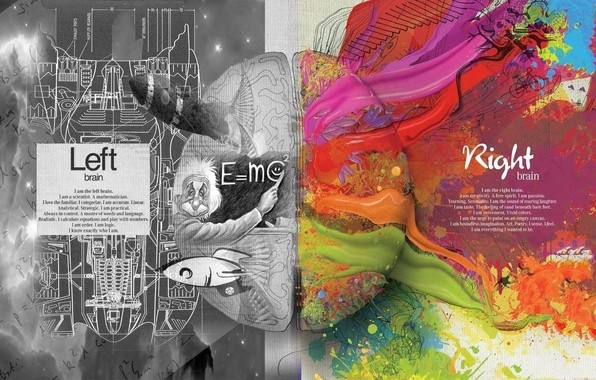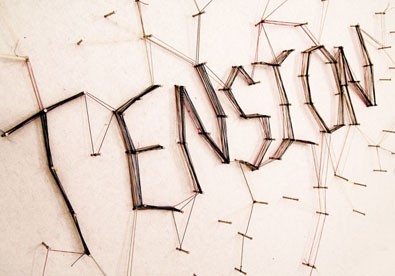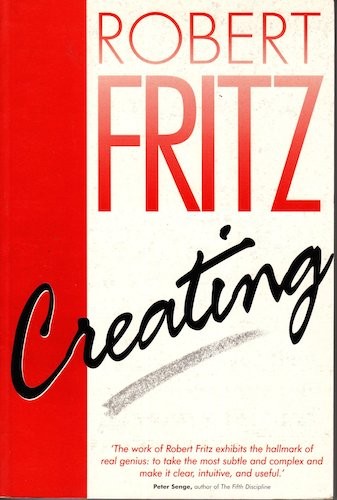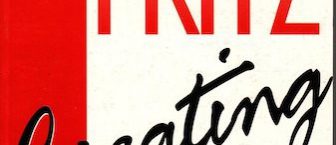To fully harness your creative potential, it is essential to grasp the subtleties of the creative process and understand how at first, elements of the craft of writing and storytelling can feel counter-intuitive or counter-instinctive.
Writing longer stories such as a novel or screenplay, requires you learn how to use both sides of your brain.
 To do this, you need to have a process to follow that sets up a dance between structure and imagination. Learning how to do this is a large part of the art and craft of writing fiction and takes time to master.
To do this, you need to have a process to follow that sets up a dance between structure and imagination. Learning how to do this is a large part of the art and craft of writing fiction and takes time to master.
In our creative writing courses we see that everyone has different natural talents.
Some people find the act of creating images on the page that evoke emotions, the most natural and instinctive thing in the world. But these writers can struggle with the all-important planning and structural process involved in creating a compelling story.
However, story structure is what creates dramatic tension, has your readers wanting to know what happens next and takes them and the characters in the story on a meaningful emotional journey.
Structure, when understood properly, stretches rather than limits your imagination.
Some writers thrive on the planning and structure and find the actual writing in a way that creates images that evoke emotions something they really need to really work on.
 To write to your potential and create the best story you are capable of, you need to sit with the creative tension and learn to do both.
To write to your potential and create the best story you are capable of, you need to sit with the creative tension and learn to do both.
This takes practice, commitment and a certain degree of courage. Initially, this can feel uncomfortable, but we encourage every participant in our writing courses to sit with the tension and work through it.
Invariably the results speak for themselves. People create more powerful stories and their writing is more compelling and has that quality that makes people want to read what they have written.
This need to sit with creative tension becomes very apparent with some writers in the first two weeks of our 4-Week Unlocking Creativity writing course.
In Week One, most writers are blown away by how good their writing can be when they learn to tap into the power of their imagination, which we believe is the true source of creative talent.
Then in Week Two, when introduced to the power of evoking emotion through bricks of detail, using various creative tools, some writers’ initial reaction is that the process stifles the free flow of their creativity. It takes time, application and practice in order to incorporate both into your writing.
If you are serious about writing, it is critical that you recognise and learn to sit with the creative tension. The more you learn about the craft, the better your writing will be.
The Process of Creating
 In his book ‘Creating’, Robert Fritz explores the creative process in depth and explains why writers need to learn to deal with it.
In his book ‘Creating’, Robert Fritz explores the creative process in depth and explains why writers need to learn to deal with it.
“Most people who are not consummate creators avoid tension. They want quick answers. They don’t like living in the realm of not knowing something they want to know. They have an intolerance for those moments in the creative process in which you have no idea how to get from where you are to where you want to be.
“Actually, this is one of the very best moments there are. This is when something completely original can be born, when you go beyond your usual ways of addressing similar situations, where you can drive the creative process into high gear. And, this is counter-instinctive. Our instincts are to end discrepancies, resolve tension, have it over with. And that’s why what I am describing is truly a discipline.
“All disciplines are unnatural. When you learn to ski, your instructor takes you to the top of the mountain and says, “Lean down.” You look down, and it can scare the daylights out of you. It’s a long fall. Your instinct is to lean backwards. As it turns out, if you lean backwards, it is like flooring the accelerator in a classic Ferrari. You will just take off right down the steep incline of the hill. But if you lean forward, you are putting the breaks on and in full control of your skis. To learn how to ski, you need to learn how to be counter-instinctive.
“As it is with most important skills we develop in life. When people complain at first it doesn’t feel right, that’s usually because they are moving against their instincts. But to master the skill it is one thing that comes with the territory.”
Learning to sit with that tension when you are writing your novel or screenplay
These principles certainly apply to the process of writing a novel or screenplay.
At the start of our 10-Month Novel and Script First Draft Course, most writers’ instincts tell them to resolve tension and avoid ambiguity by coming up with a quick answer to their story questions. It takes them a while to realise that story problems are just opportunities in disguise.
Over the course of the 10 month process, everyone sees a dramatic improvement in the quality of their story and those of their fellow writers.
Sitting with the creative tension of not knowing is an important part of the creative process of writing a novel or screenplay.
The people from Pixar Studio, who made such classic films as Toy Story, Monsters Inc and Finding Nemo, recognise this, which is why they’ve had such a phenomenal run of successful movies.
In his book ‘Creativity, Inc: Overcoming the Unseen Forces That Stand in the Way of True Inspiration’, Ed Catmull wrote,
“Having seen and enjoyed Pixar movies, many people assume that they popped into the world already striking, resonant and meaningful – fully grown, if you will. In fact, getting them that point involved months if not years of work.
 “If you sat down and watched the early reels of our films, the ugliness would be painfully clear. The natural impulse is to compare the early reels to our finished films – by which I mean to hold the new to standards only the mature version can meet.
“If you sat down and watched the early reels of our films, the ugliness would be painfully clear. The natural impulse is to compare the early reels to our finished films – by which I mean to hold the new to standards only the mature version can meet.
“Our job is to protect our babies from being judged too quickly. Our job is to protect the new. In order for greatness to emerge, there must be phases of not so greatness. Think of a caterpillar morphing into a butterfly, it only survives because it is encased in a cocoon.”
Dwelling in the space of not knowing and seeing storytelling as an adventure and a process is what will enable you to write the best story you are capable of writing.
John Cleese said one of the reasons he’d been more successful with his writing than most of his peers came from the fact he took his time solving story problems.
“Creativity is not a talent,” he said. “It is a way of operating … If you just keep your mind resting against the subject in a friendly but persistent way, sooner or later you will get a reward from your unconscious.”
The great detective Sherlock Holmes also understood this. When asked by Dr Watson if he suspected anyone, he said, “Yes. Myself. Of coming to an answer prematurely.”




